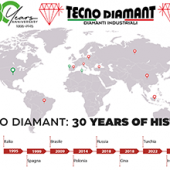Brazil looks to the future
The Brazilian ceramic tile industry contracted sharply in 2022 and expects a further slowdown in 2023, although the first signs of improvement may emerge in the second half of this year.

After an exceptional 2021, Brazilian tile sales experienced a severe slowdown in 2022.
The fall in demand in the Brazilian domestic market, which absorbs between 80% and 90% of total national production, began to be felt as early as January 2022 in parallel with the rise in inflation and in interest rates, which the Brazilian Central Bank raised to the current figure of 13.75%, the highest level since 2016.
After growing steadily over the years to reach a record 902 million square metres in 2021, Brazilian tile consumption plummeted by 18.3% to 736 million square metres last year. To avoid accumulating excessive inventory, production was also reduced by around 12% to 929.6 million sqm.
Exports performed better. Total exports amounted to 113 million sqm, lower than the record figure of 130 million sqm reached in 2021 but still the second-best result ever in volume. In value terms, exports reached $513 million, 5% more than in 2021 thanks to a rise in average price from $3.74/sqm to $4.53/sqm.
In the United States, the largest export market for Brazilian tile manufacturers, the sharp increase in transport costs made Brazilian products less competitive, resulting in a decline in sales in volume from 23.5 to 20.6 million sqm, although sales increased by 2.9% in value to US $119 million.
Read the interview published in Ceramic World Review no. 152 to Benjamin Ferreira Neto and Mauricio Borges, respectively Vice President and CEO of the Brazilian ceramic tile manufacturers’ association Anfacer.
Did you find this article useful?
Join the CWW community to receive the most important news from the global ceramic industry every two weeks






















